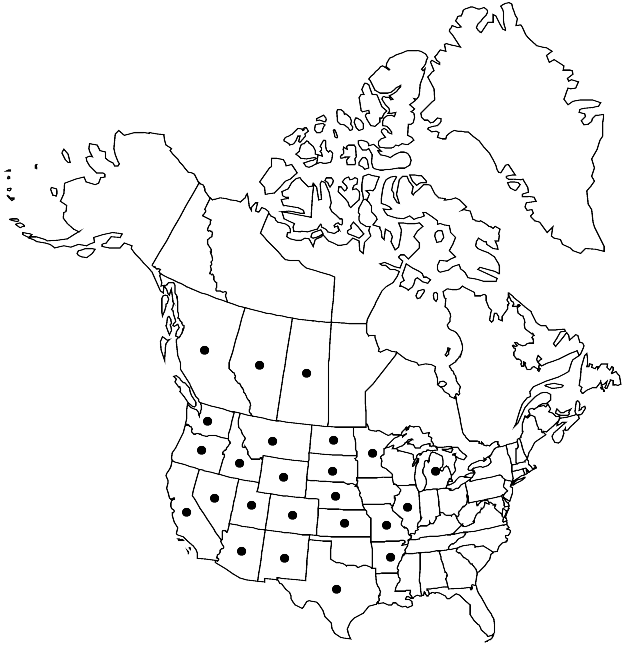Rorippa curvipes
Pittonia 3: 97. 1896.
Annuals or, rarely, perennials; (short-lived, terrestrial or of wet habitat, not submerged); glabrous or hirsute, (trichomes cylindrical). Stems (few to several from base), usually ascending, decumbent, or prostrate, rarely erect, branched distally, 1–4.2 (–5) dm, (hirsute proximally). Basal leaves not rosulate; blade margins pinnatifid. Cauline leaves shortly petiolate or sessile; blade oblong or oblanceolate to obovate, (terminal lobe oblong), (2–) 3.5–10 (–12) cm × (5–) 10–30 (–37) mm, (lateral lobe smaller than terminal), base usually auriculate, rarely amplexicaul, margins: proximal pinnatifid or sinuate, distal dentate or entire, (surfaces sparsely pubescent). Racemes elongated. Fruiting pedicels divaricate-ascending to horizontal, straight or recurved, (1.2–) 1.7–5 (–8) mm. Flowers: sepals erect, oblong, 0.8–1.8 × 0.5–1 mm; petals (erect), yellow, oblanceolate to spatulate, 0.5–1.8 × 0.2–1 mm; median filaments 0.9–1.3mm; anthers ovate, 0.3–0.5 mm. Fruits silicles or siliques, curved, ovoid to pyriform, 2–8 (–8.8) × (0.5–) 1–2.5 mm; valves glabrous; ovules (20–) 30–80 per ovary; style 0.3–1 mm. Seeds biseriate, brown, cordiform, 0.5–0.7 mm, colliculate. 2n = 16.
Phenology: Flowering May–Sep.
Habitat: Muddy shores of lakes and ponds, stream beds and banks, edges of cultivated fields, wet roadside, meadows, seepage areas, ditches, creeks, gravel bars
Elevation: 100-3500 m
Distribution

Alta., B.C., Sask., Ariz., Ark., Calif., Colo., Idaho, Ill., Kans., Mich., Minn., Mo., Mont., Nebr., Nev., N.Mex., N.Dak., Oreg., S.Dak., Tex., Utah, Wash., Wyo., Mexico (Coahuila)
Discussion
Selected References
None.
Lower Taxa
"elongated" is not a number."thick" is not a number."dm" is not declared as a valid unit of measurement for this property."dm" is not declared as a valid unit of measurement for this property.